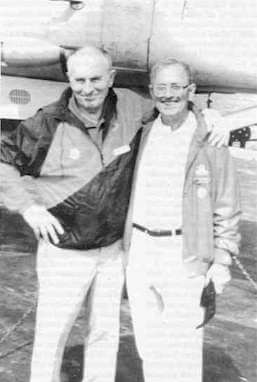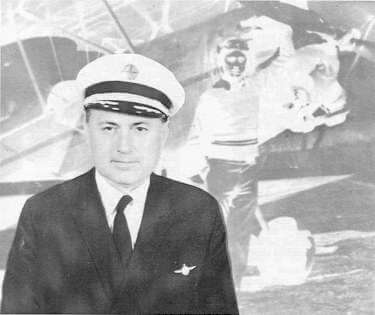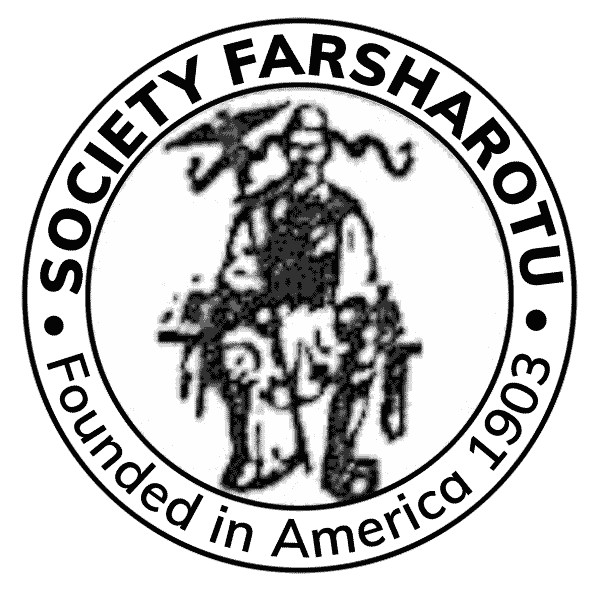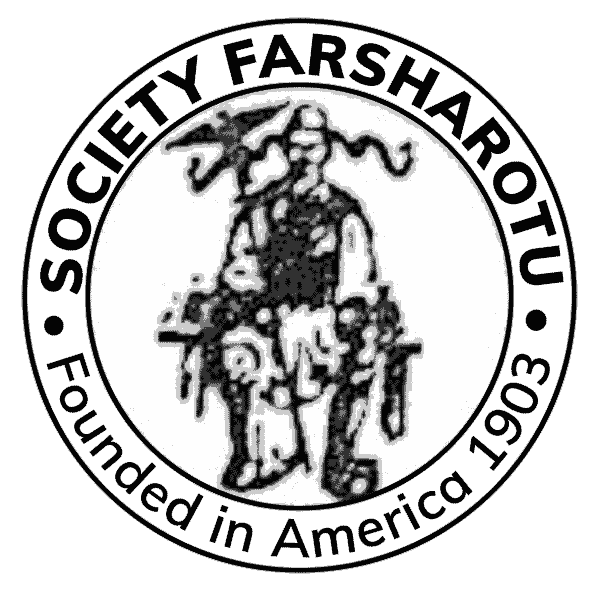The Tamposi Brothers, Pioneers in American Civil Aviation
Nick, Jim and Sam. With such familiar American names they could be three brothers in any Yankee family. But their common names mislead us, for they belong to three very uncommon men. They are the stalwart sons of George and Aspasia Tamposi, who immigrated here from the mountain hamlet of Avdhella, Greece, at the start of this century. This couple, who did stints in cotton mills and shoe factories, likely never dreamed that their sons would one day become some of Nashua’s most distinguished citizens.
The brothers are renowned as real estate developers with holdings in New Hampshire and Florida, part owners of the Boston Red Sox, and active in the New Hampshire Republican Party. Sam’s daughter Elizabeth served as a state legislator and, for a time, as Assistant Secretary of State in Washington, D.C. But what is not so well known today is that these three brothers were also pioneers in American aviation. Their accomplishments in American civil aviation rivaled their very impressive business successes.
As young men, the three brothers were seduced by the siren song of Aviation: the hum of a plane’s engine and whirring buzz of its propellers as it soared in the sky overhead. Whenever they heard that magic song, they would rush out of the house to see the plane, identify the model, and estimate the altitude and direction of flight. They longed to learn the secrets of flight and to be at the controls of a machine that defied gravity and permitted human beings to break the bonds that held them slaves to the surface of the earth, thus giving humankind the boundless freedom of the open sky. Their newly awakened passion was not at all incompatible with their Vlach heritage from the Pindus Mountains, but rather opened a new direction in which to express it — up toward the heavens.
Charles Lindbergh, who flew a Ryan monoplane on a solo flight from New York to Paris in 1927, was the Tamposis’ idol. They read his biography eagerly and devoured many books on aviation. They would spend a week’s salary to pay for an hour of flight instruction on weekends. Their love of flying never waned. They became private pilots, then limited commercial and finally commercial pilots and flight instructors. They took complete control of the airport in Nashua from around 1925 to 1940. They even helped to grade the runways.
They organized Nashua Aviation, which boasted a fleet of 18 planes of diverse models and makes. Some could be equipped with skis for winter flying and others with pontoons to alight on lakes and rivers. The company employed 23 people. Nashua Aviation was an organization of considerable magnitude. It provided hangar space for their own fleet of planes as well as for other owners and aviators. It had to provide aviation fuel, maintenance, security, weather service, communications with planes, and a number of other such services associated with an airport. Nashua Aviation had a charter service that could fly any person to any place in the United States and Canada. This required exceptional piloting skills. Bear in mind that communication facilities were practically non-existant, good airfields were scarce, and the charter pilot attempted to take his paying passenger as close to the final destination as possible. The pilot had a minimum of instruments and often had to land on improvised runways. Landing on skis in the winter also required great skill. Nashua Aviation gained valuable experience and skills in cold weather flying, like preventing icing on the wings and frozen carburetors. Their background in charter operations provided a database for the scheduled airlines that followed.
Flying for Nashua Aviation in those days demanded more from these barnstormers than from today’s airline pilots, whom mostly rely on sophisticated communications, lighted runways, de-icing services and countless other facilities non-existent in those pioneering days. And yet, consider that although these primitive flights hardly ever flew the same route twice as they trail-blazed all over the United States and Canada, Nashua Aviaition never lost a single plane, or injured a single passenger in more than 15 years of operation! A remarkable record to be envied by today’s high-tech airlines.
Perhaps the most important contribution made by Nashua Aviation was in pilot training. Jim told me that Nashua Aviation trained hundreds of pilots and a number of flight instructors. Pilots could be certified as private, limited commercial, and commercial pilots. Candidates had to pass rigid written examinations as well as executing properly the various flying skills. These demonstrations were under the supervision of the Civil Aeronautics Administration and under the Department of Commerce. The written examinations covered navigation, aircraft and engines, theory of flight, and meteorology, plus rules, regulations and laws covering the flight of aircraft. Jim Tamposi was in charge of aeronautic education and still is today. He is one of the founders of the Daniel Webster College of Nashua, which devotes a good portion of its curriculum to aviation, from administration to flight training. Jim was recognized as a pioneer in this field by the Daniel Webster College when it conferred an honorary Ph.D. on him.
Emergency procedures were emphasized in pilot training and certification. Emergency maneuvers such as dead stick landings — that is, one without engine power — were stressed and required confidence and steady nerves to execute. Today, they’re more commonly called simulated emergency landings.
It is important to note that the large number of pilots trained by Nashua Aviation became the core of the force that developed into today’s airline pilots. Many of the Tamposi-trained pilots were ready to fly combat duty when World War II broke out.
The Control tower at the Nashua Airport today is called “Nick Tamposi Tower;” tangible proof that the brothers are recognized as holding a place of honor as pioneers in American civil aviation.
The “Romantic Period” in American aviation
Being a pilot during the early days of flying (1918 to about 1925) was considered a heroic and romantic profession. The pilots themselves formed an informal brotherhood; greeting each other with warmth and enthusiasm, each eager to hear about the other pilot’s experience. These exchanges took place in sessions called “Hangar Flying.” During these meetings, pilots took turns relating some fantastic experience, and of course exaggerating a little every time it was told. There was a close camaraderie and older pilots would encourage fledglings. The Tamposi brothers knew most of the important pilots of their time. There was the time when Richard Chamberlain, one of the great pilots of that time, came to Nashua. He was so fascinated by the Tamposi brothers’ passion and innovative ideas for aviation, that he permitted one of the brothers to fly his airplane. The Tamposis were also acquainted with Lindbergh.
During the Hangar Flying sessions, popular axioms were coined: “There are old pilots and there are bold pilots –but there are no old, bold pilots!” Obviously, the latter had a short life span. Others included: “Any landing that you can walk away from is a good landing”; “It is better to be on the ground wishing you were in the air, than to be in the air wishing you were on the ground”; and, “The runway behind you doesn’t count, it’s the runway in front of you that matters.”
A great amount of time was put into training for emergency landings. Realistic scenarios were thoroughly examined and various strategies developed. For example, if forced to land in a postage stamp of a field with not enough clearing to slow the plane down, a pilot could aim for the area between two closley parallel trees so as to clip off each wing when flying through them. Such an emergency landing technique allowed the trees to absorb some of the force and slow the plane down, hopefully saving the pilot in the process.
An exciting period in American history
Little by little, American civil aviation began to mature in the late 20’s and early 30’s. More reliable engines were built, stronger aircraft were designed, and better systems of navigation were constantly being developed. Flying by the seat of one’s pants was becoming a thing of the past. Whereas in the past, flying stressed aerobatics and “barnstorming,” now the emphasis was on flying great distances, increased velocity, and greater payloads. American pilots with considerable skill and maturity were ready to challenge space and time. Prizes were offerred for certain aeronautical feats. A man named Ortega offered $25,000 for the first man to cross the Atlantic in a solo flight, and there were many other similar prizes offered.
American pilots over the years had honed their skills to perfection and were now eager to meet new challenges. Aviation, no longer a novelty and the profession of dare devils, was challenging conventional systems of transportation such as railroads and steamships. Also, women were now beginning to fly.
This period of American civil aviation, in which the Tamposi brothers took part, can be compared to the 15th and 16th centuries of world exploration and discoveries by men in sailing ships. But where it took Magellan three years to circumnavigate the globe, it only took Wiley Post and Harold Gatty a little over eight days, flying the single engine monoplane “Winnie Mae.” Five years later, in 1938, Howard Hughes, flying a twin-engine Lockheed, performed the same feat in a little over three days.
Flying fever was not confined to the United States. The pilots of France, Great Britan, Germany, and Italy and even the pilots of small countries like Romania, Spain, and Portugal were eager enthusiasts and participants. For example, Italy’s Italo Balbo led a flight of a dozen or so seaplanes, flying in formation from Italy to Chicago in 1937. Alex Pompano, a Romanian pilot, was in New York planning a flight to Romania. A huge German Dornier with 12 engines flew to Rio de Janeiro. Sacadura Cabral and Gago Coutinho flew the South Atlantic from Portugal to Brazil.
Nick Tamposi, the pilots’ pilot
Of the three flying Tamposi brothers, Nick, the eldest, was the one who dedicated his entire life to flying. He first rode in a plane at the age of 12, soloed at the age of 17, and became a commercial pilot a few years later. At 22 he became a captain for Pan American Airways. There were some questions about making him a captain at such an early age, but it was decided that if he was that talented and responsible, then he was old enough.
Nick was such an extraordinary pilot that Pan American Airways was constantly bombarded with requests by large corporations and heads of state to “loan” Nick for certain flying missions. One such request came from Indonesia, asking that Nick be “loaned” to fly Sukarno, their head of state, on a round-the-world tour. Pan American granted this unusual request and Nick completed the mission as Sukarno’s personal pilot. Sukarno was so impressed with Nick’s flying skills that he presented the pilot with a very elaborate pure silver dinner set upon the mission’s completion.
In 1967, Nick Tamposi inaugurated flights to Bucharest and Moscow. Up to that period, there had been no scheduled flights to those two countries because of the Cold War. Nick fitted perfectly for this mission with his Romanian language skills and familiarity with Romanian culture. On this flight, Nick carried the Key to the City of New York as a gift from Mayor Lindsay to the mayor of Bucharest. Nick was received with the fanfare usually reserved for heads of state. He was met by folkloric singing and dancing groups, and he ended up being “adopted” as a Romanian national hero.
It would take many pages to outline Nick’s acheivements as a pilot. He flew just about every place on the globe, logging in some 25,000 hours of flight time.
Bucharest, Romania, August, 1970
The path of the Tegu family nearly crossed that of Nick Tamposi in the month of August, 1970. My wife and I, together with our five children, were returning from a two-week tour of Turkey. In our VW bus we started out from Madrid, Spain to complete a camping trip that covered every country in Europe.
We were returning from Turkey and were about to enter Romania from the southeastern corner of the country. We were very excited about visiting this beautiful Balkan country and obtained visa entry at the border. However, Bucharest was closed to all tourists at this time because President Nixon was in the Romanian capital — he’d been flown there by Nicholas Tamposi. I could not understand why Air Force One would be flown by a Pan American pilot since the President’s plane had its own pilot and crew. But then it dawned on me that if Nick was valued enough to be loaned to other heads of state, he was surely qualified to fly our own President.
We wanted very much to meet our countryman, but were denied entrance to the capital until after the President’s plane had left for Moscow. The Vlachs of Bucharest were very proud of him, dubbing Nick “the Romanian Lindbergh.” It was obvious that a handsome, articulate American pilot had captivated the hearts of the Romanians by serving as a Good Will Ambassador.
The soul of a pilot
I think Nick’s unique Vlach heritage, as well as ideas and attitudes learned from his immigrant parents, played a key role in his talents and understanding of people and different cultures. Where the typical American might feel uneasy when surrounded by a foreign tongue and by different cultures, Nick Tamposi would adjust to the situation and reap rewards by enjoying the experience. He possessed what the Spanish call don gente, roughly translated as having the gift for dealing with people.
Nick also possessed other skills, including writing for several Nashua newspapers. Like Anne Morrow Lindbergh, who wrote beautifully about the wonders of flying, Nick’s global air treks infused him with such a sense of passion and wonder that he was compelled to convey his feelings to the earth-bound.
The two articles I’ve read left a lasting impression of a sensitive, yet tough, and keenly observant individual. There was the article in which he wrote about one of his many flights over the former Soviet Union, with a land mass so huge that it takes the sun eleven hours to cross it. During this daylight flight, Nick had a bird’s eye view of a concrete highway stretching for hundreds of miles. On it he spotted a solitary automobile traversing the country’s heart. With that one telling detail, Nick effectively revealed that the superiority and successes claimed by the communist system were a naked lie.
In another article, a night flight five miles above Brazil’s snaking, voluminous Amazon river, the cockpit was cloaked in darkness except for the eerie glow of the many instruments on the control panel. He was flying over a pristine area known as the Matto Grosso (Grand Woods). Nick writes with the soul of a poet about the wonder of flying under a canopy of a billion stars, some of them a million times larger than our own sun…
What a rich cargo of adventures and inspiration Nick could have delivered to future generations of pilots had he not died prematurely in 1975. But he left an admirable legacy in his many contributions to aviation history. I know his spirit lives on wherever young pilots dare to soar like eagles through the clouds, or beyond to the stars.

Sam (left) and Jim Tamposi as guests of the United States Navy aboard
the aircraft carrier Dwight D. Eisenhower in August 1992.

Pan American Captain Nick Tamposi. In the background is
the bi-plane in which Nick soloed.


Amazing story, makes mine look like child’s play even though I have spent the last 12 years commuting to work from KASH to 58M to do my Systems Engineering work for my Army client on Dash 8s. Still rent my hangar from Jim Tamposi. Fantastic aviation story and I am certain that it is only the tip of their iceberg.
I totally agree about this fantastic story, Stan — and I’m not an aviator, so I have no idea what the rest of the iceberg looks like… My mother was from the same tiny mountain village in Greece and we would sometimes visit the Tamposis in Nashua, or Nick would say hello when he was in New York. The 3 brothers are an amazing American success story.
The father of Nick, Jim, and Sam was Nasi Tamposi, not George. George Tamposi was their uncle.